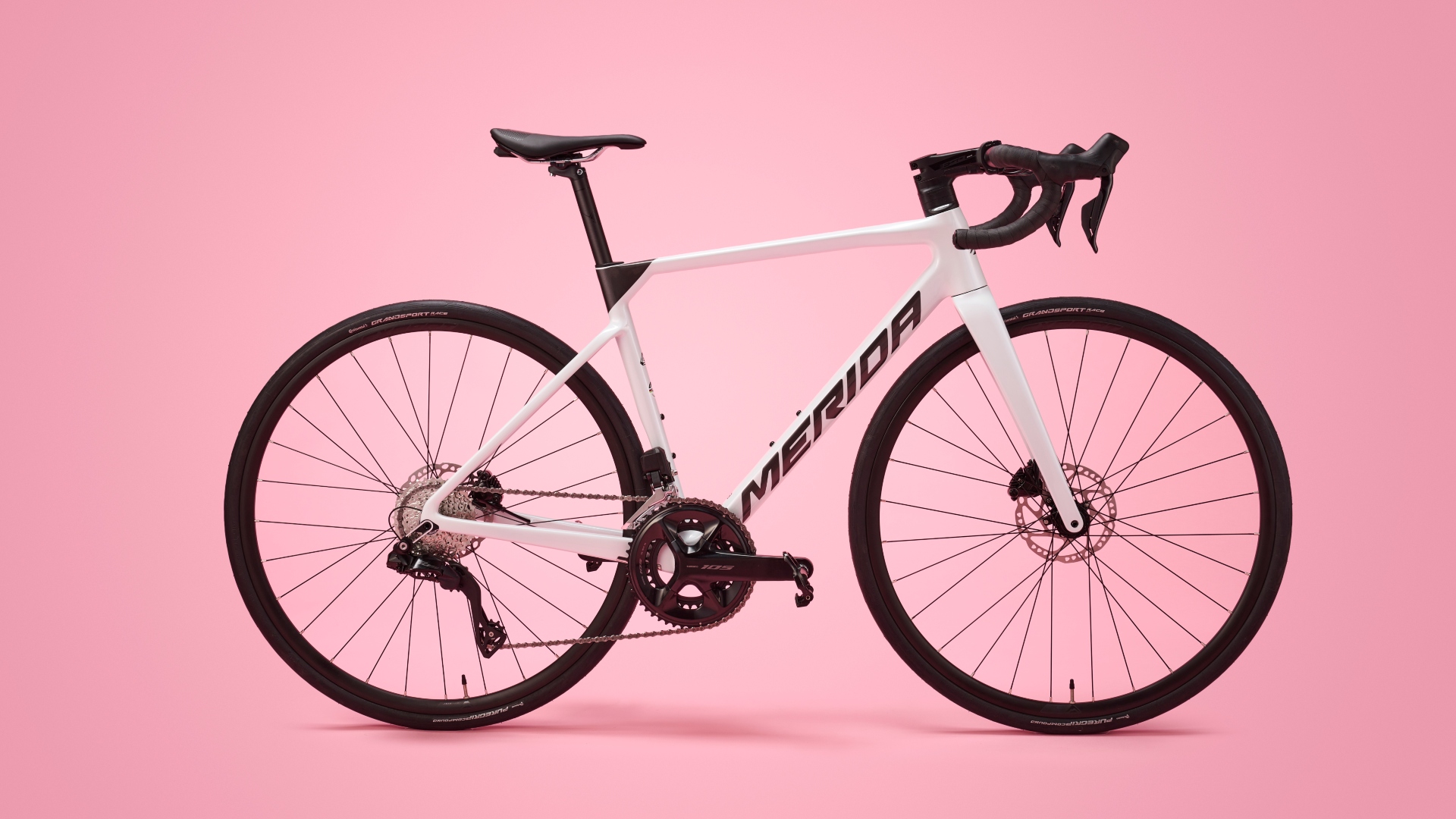
There’s a recent trend for manufacturers to push the traditional race bike towards aerodynamic efficiency by incorporating full-aero tubing and deeper section wheels. In terms of straight-line speed there are huge advantages with this approach but – unsurprisingly – drawbacks too like additional weight and the loss of some compliance and comfort.
Merida meanwhile has resisted the urge to jump on the trendy bandwagon, instead taking a more traditional and balanced approach with the race-orientated Scultura. While it claims to be the “most aerodynamic ever” it’s designed to optimise compliance and minimise weight delivering its rider fresh to power over the finish line. It’s an approach that seems to work if wins for the World Tour Team Bahrain Victorious are anything to go by.
The frame
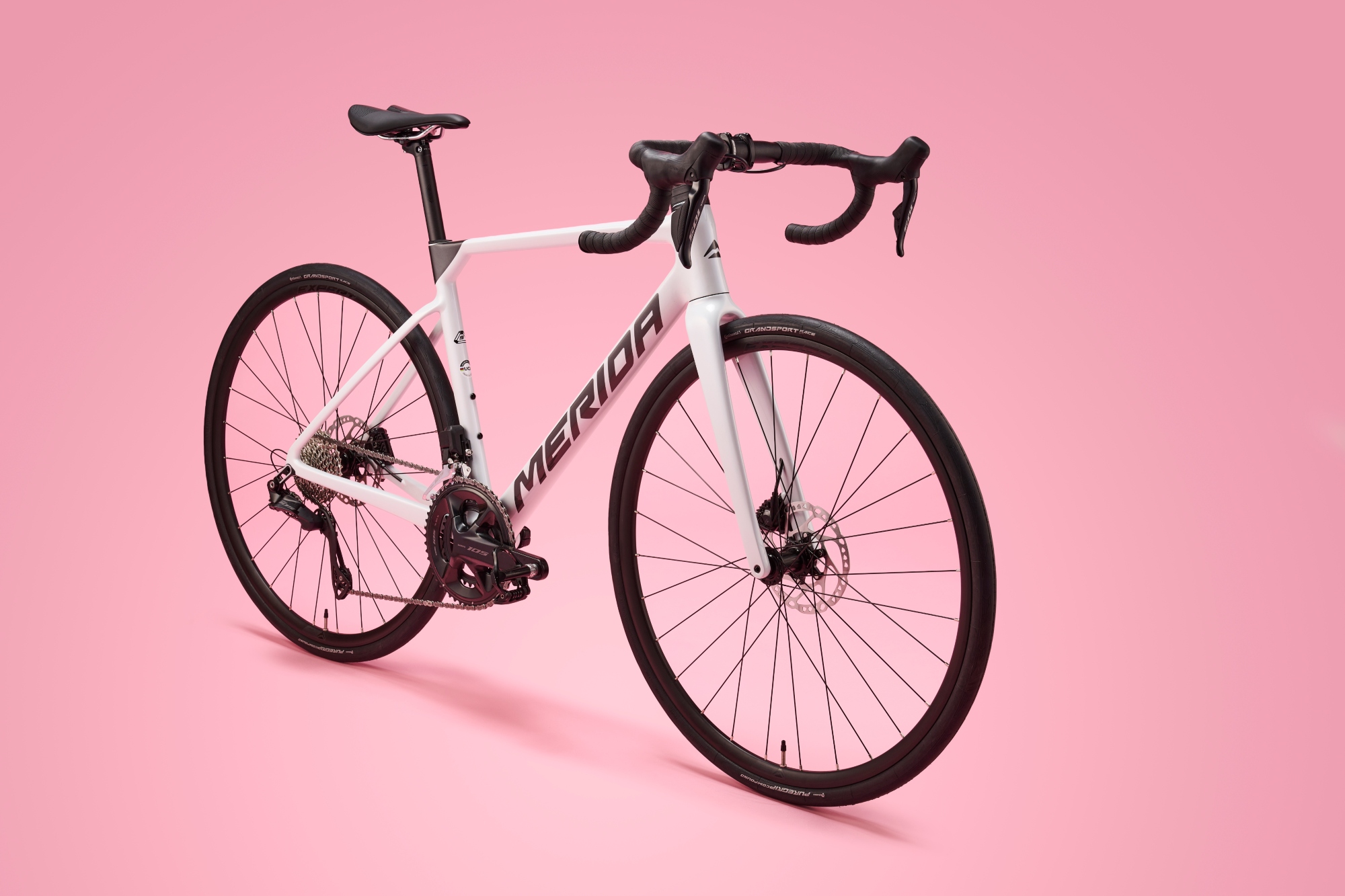
The Scultura 6000 has a fully carbon frame and fork using Merida’s CF3 carbon (Merida grades its carbon from CF5 to 2, 5 is the highest). It’s in the construction of the frame where Merida has really bucked the trend of aero-ising. Instead of aero-profiled tubes, the Scultura’s rounded tubes keep the weight down and maintain compliance. As we’ve come to expect, cables and wires are all tucked inside the frame for a tidy and efficient finish.
The tubing may differ but the Scultura shares geometry with its full-aero sibling the Reacto. Our medium had a stack of 557mm and a reach of 395mm, which makes it relatively longer (by 10-20mm) and higher (4 -8mm) than bikes such as Specialized Tarmac and Trek’s Madone.
Seat and head tube angles are 73.5 degrees, chainstay length 408mm and a total wheelbase of 990mm all point to sharp and snappy pedalling and handling.
The build
The Scultura 6000 Di2 looks like a bike that means business. It’s neat and tidy and pleasingly bereft of fussy graphics. It’s simply white with black details which pull the components into the lines of the frame; personally I love how the lines of the seatstays flow neatly into the angular seat tube junction.
The headline feature of the Scultura 6000 Di2 is, rather obviously, the Di2. The 6000 Di2 has the whole Shimano 105 2x12 groupset; bottom bracket, cranks, derailleurs brakes, levers, cassette, and shifters (if you want more of our thoughts on the 105 Di2 groupset, head over to our full review.)
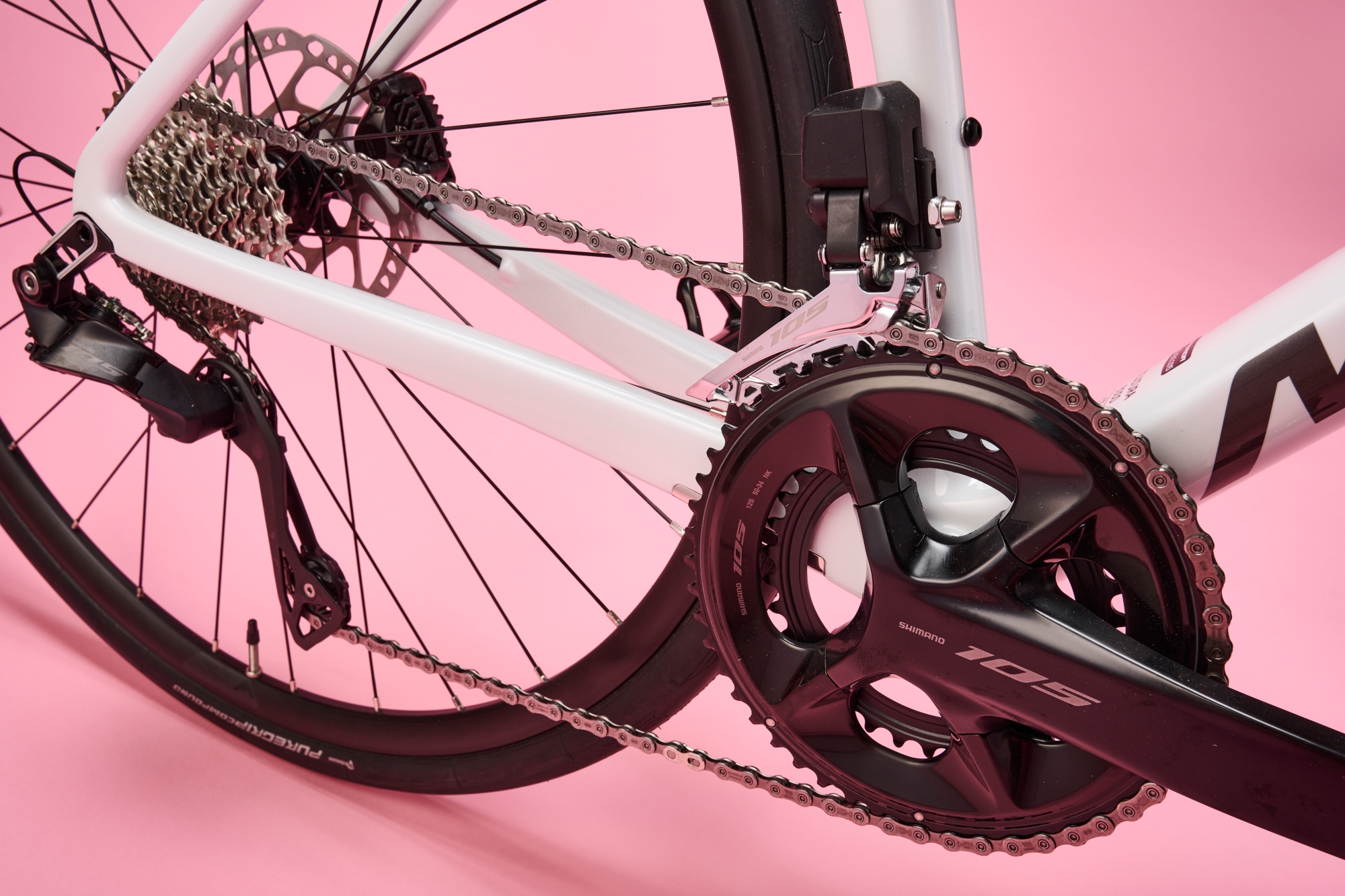
Comparing the 6000 Di2 to the mechanical version of the Scultura 6000, Merida has specced the 6000 Di2 with a more generous cassette ratio (11-34 on Di2 vs 11-30 on Ultegra) so there’s a larger range of gears and a more generous bottom end. Paired with its compact crankset, the 6000 Di2 has the widest gearing of the whole Scultura range. This makes it an attractive option if you like to keep gearing light on the hills.
With the RRP of Shimano’s 105 Di2 groupset equal to half the price of the 6000 Di2 it’s not surprising that there are some relative compromises when it comes to the build of the rest of the bike. The in-house aluminium rimmed wheels and entry-level 28c Continental tyres are the most obvious places where Merida has kept the price down. If you are looking at swapping tyres, it’s worth noting that although the frame can accommodate a 30c tyre the rim’s 17mm internal width makes the combination “compatible” rather than “optimal” according to industry safety guidance.
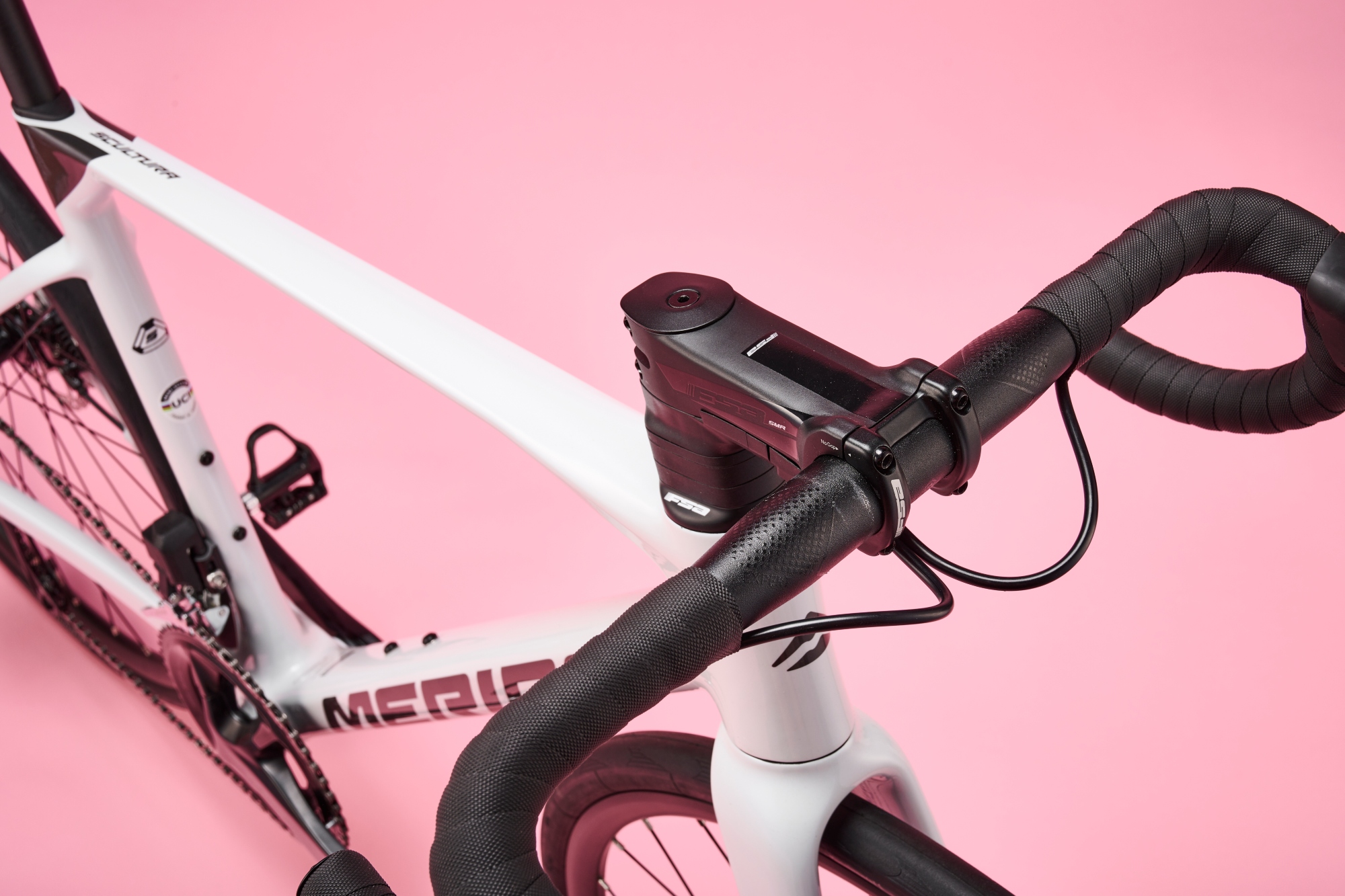
The aluminium cockpit combines a Race Face stem with an in-house bar, both are sized proportionally to frame size so our test medium bike had a 420mm width bar and 110mm stem. The cockpit has a really tidy look to it with aesthetically pleasing spacers.
One advantage of the two-piece cockpit is the flexibility it gives to swap out components without a huge additional expense, something I took advantage of during testing. Riders like me, who are on the smaller end of the bike’s sizing, may find the bike’s length and bar size makes for a stretch to the levers (the small has the same bar size as medium and large frames). If you want to keep the tool holder on the saddle’s rails you will find you’re limited on how far forward you can push the saddle on the layback seatpost.
The ride
The Scultura is a bike that wants to be ridden aggressively. Its stiff frame responds to the effort you put in and quickly gets you up to speed. Once there, it cruises along as you push out the effort. It encourages and rewards you for getting your head down and riding hard all the way. The more you put in, the more you get out - there’s no doubting that you’re riding a race bike.
Given its racing brief, I was pleasantly surprised by the Scultura’s balance and control. At speeds and efforts where I often feel a bike is twitchy and on the edge, the Scultura steadily holds its line. It’s a compliment to say it doesn’t feel as fast as it is.
While the Scultura is stiff and precise it isn’t overly harsh to ride. The carbon frame’s layup and 28cc wide tires combine well to absorb the chatter of the rough UK roads. The alloy-rimmed wheels also play their part, adding a little dampening to the system. During testing, I swapped the wheels for a set of Elitewheels 50mm carbon rimmed hoops which made for a more reactive but also less comfortable ride.
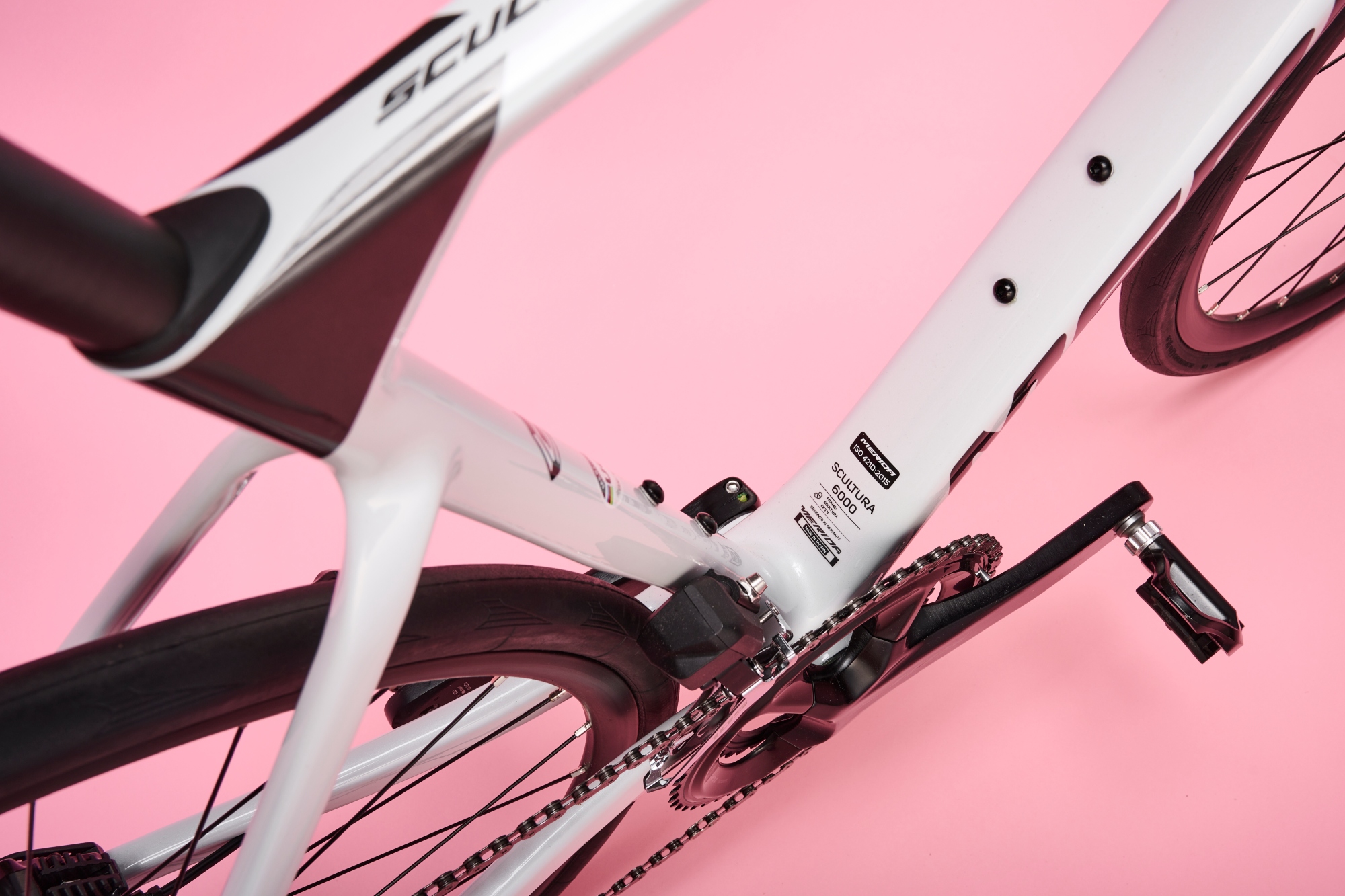
The Scultura is great fun ridden hard but I didn’t find it quite as adept when I turned down the effort. With a more relaxed body position the bike feels less balanced and the steering wandering and disjointed, it’s almost like you have to wait for the back end to catch up around the corner. I found that tinkering with my setup (a shorter and slammed stem) improved the handling but didn’t eradicate the lag.
I also found there was a less reactive feel to the pedal stroke at lower speeds, almost a sense of inefficiency. In the same way, the bike needs you to be up and over the front end to get the best out of the handling and it needs you to be over the bottom bracket to make the most of the power transfer through the cranks. It’s certainly harder to find the right tempo at lower efforts than it is when you’re up to speed. For this reason, it didn’t feel as spritely climbing as I’d have liked, particularly on those long drags where I was sitting with my weight back in the saddle.
The verdict
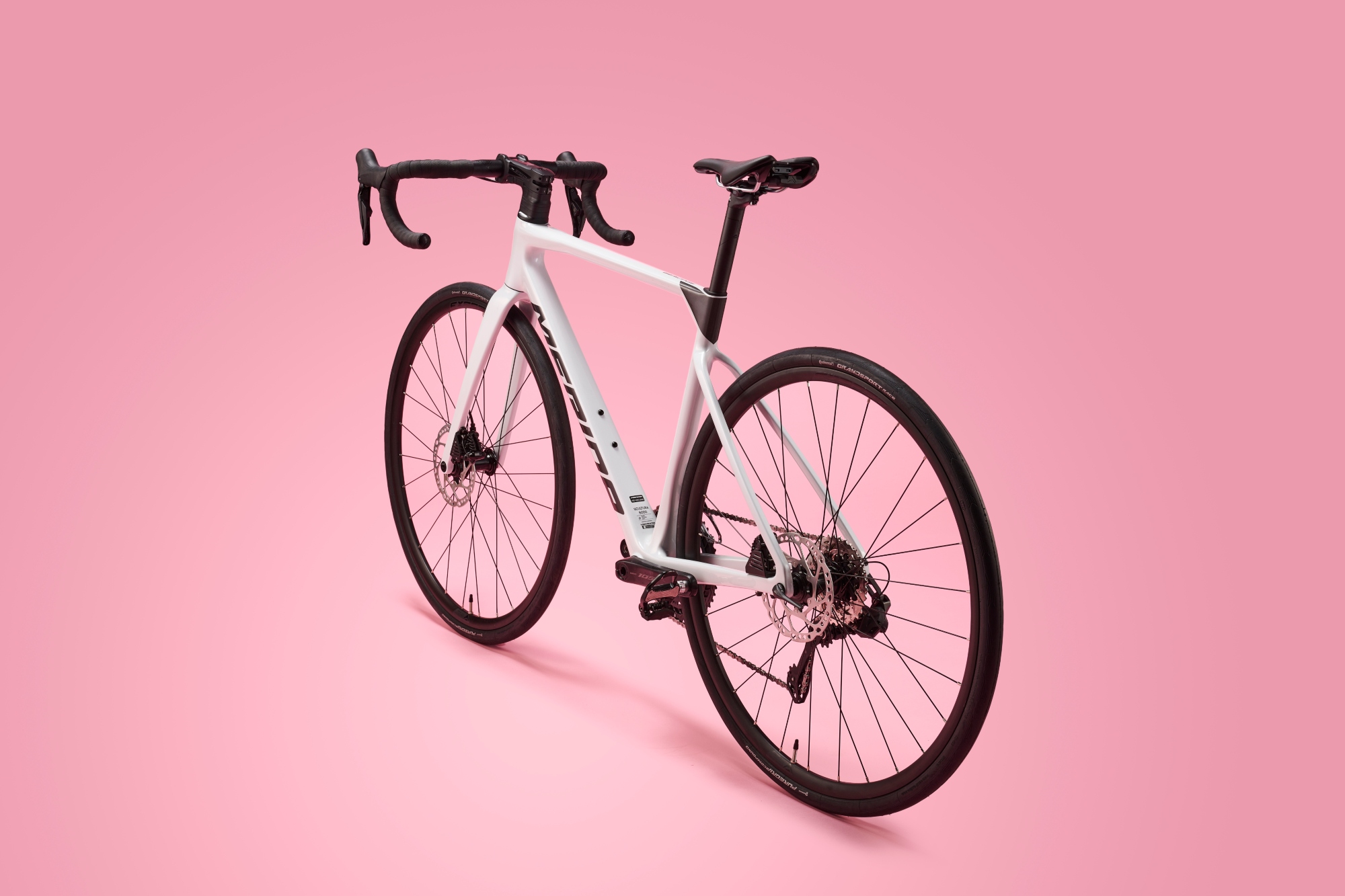
At £3,300 the Scultura 6000 Di2 is one of the least expensive Di2-equipped race bikes currently available. Canyon’s Ultimate CF SL 7 Di2 has a very similar spec aside from the inclusion of a 4iii power meter but costs £500 more. The Ribble R872 Disc-Pro is £500 cheaper for what on paper is a very similar build.
The Scultura 6000 Di2 provides everything it promises; a fast but comfortable race bike that is at its best ridden hard. As a package, it’s a great option if you’re keen on electronic gearing and don’t have a huge budget (a future wheel upgrade would be worth saving for). If you’re at the smaller end of the size range for a model, pay attention to the component sizing as well as the frame as you may want to size down for a better fit.
The spec
- FRAME SCULTURA CF3 V
- FRAME SIZE XXS, XS, S, M, L, XL
- FORK SCULTURA CF3 disc
- RIM MERIDA EXPERT SL
- HUBS VP CLK170F / VP CLK270R
- FRONT TYRE Continental Grand Sport Race
- REAR TYRE Continental Grand Sport Race
- HUBS MERIDA EXPERT SL
- CRANK Shimano 105
- BOTTOM BRACKET SM-BB71-41B, Pressfit 86.5
- CASSETTE Shimano CS-R7100
- CHAIN Shimano CN-M6100-12
- SHIFTERS Shimano 105 disc Di2
- FRONT DERAILLEUR Shimano 105 Di2
- REAR DERAILLEUR Shimano 105 Di2
- BRAKE LEVER Shimano 105
- BRAKES Shimano 105
- ROTORS Shimano RT64
- HEADSET FSA ACR
- STEM FSA SMR ACR
- STEM SIZE 90 mm-XXS/XS, 100 mm-S, 110 mm-M, 120 mm-L/XL
- HANDLEBAR MERIDA EXPERT SL
- GRIP MERIDA ROAD Expert
- SEAT POST MERIDA EXPERT CC
- SEAT CLAMP MERIDA EXPERT
- SADDLE MERIDA EXPERT SL







